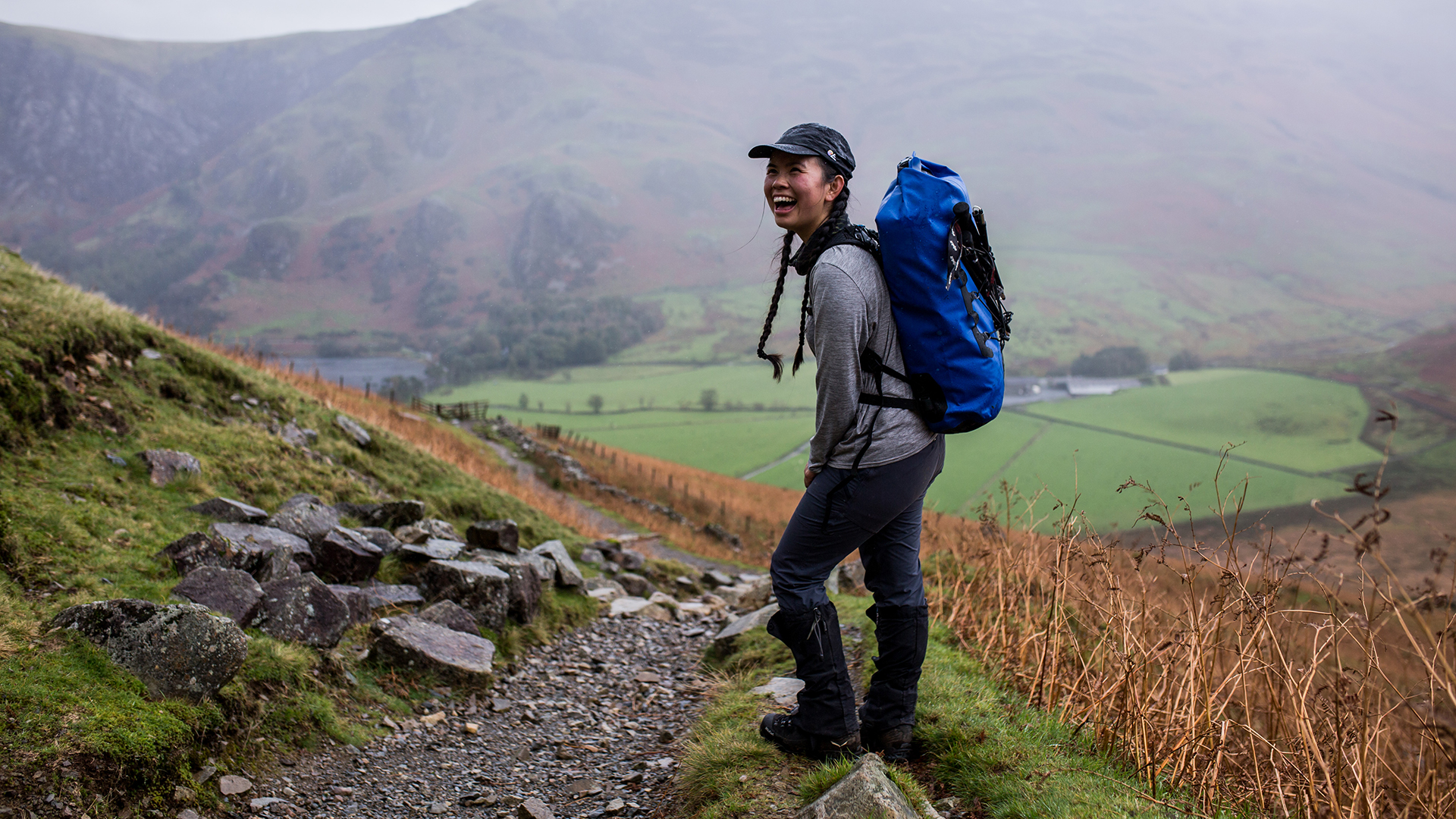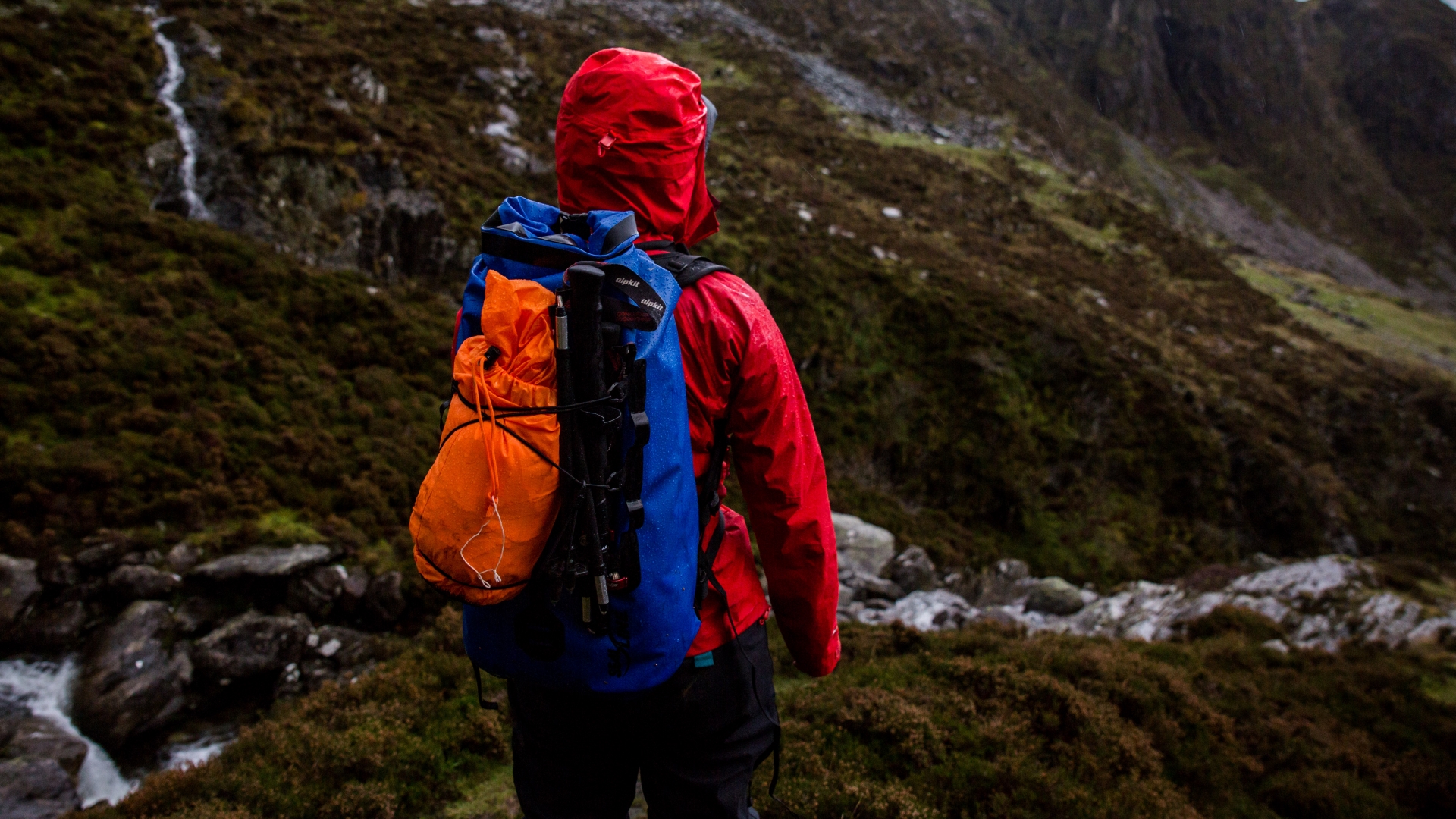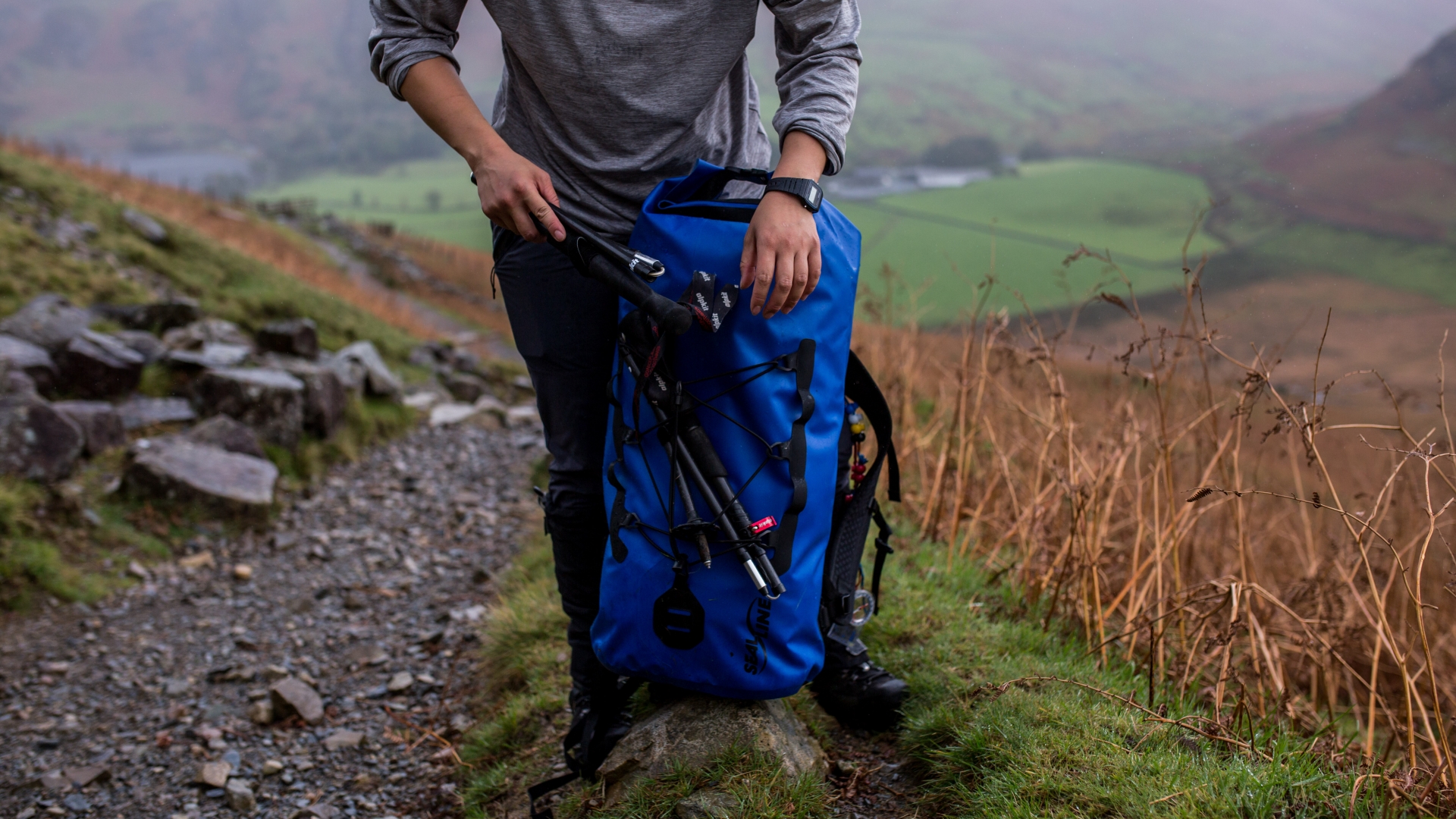
Meet the reviewer
SealLine Bigfork Dry Daypack: first impressions
The Seal Line Bigfork Dry Daypack is aimed at paddlers, but is also designed for folks to comfortably carry gear on single day and overnight adventures. There are similar minimalist packs in alpine hiking and trekking out there, so I tested it on an appropriate, typical damp-weather day in England’s Lake District.
• List price: $174.95 (US) / £155 (UK)
• Weight: 800g / 28oz
• Capacity: 30 liters
• Colors: Lime / Black / Orange / Blue
• Compatibility: Kayaking, hiking
Combining the waterproof sheen of a polyurethane-coated plastic with the weather resistant capability of a high-performance dry bag and the shoulder straps and waist belts of a decent lightweight hiking bag, the SealLine Bigfork is a bag that can be thrown around, resistant to scuffs, dirt and moisture penetration. The DrySeal roll-top closure and sealed seams are designed to offer protection against grim wet weather, and it quickly shakes off mud, grit and snow thanks to the smooth material that amplifies its waterproof protection.
SealLine Bigfork Dry Daypack: on the trail
Testing the SealLine Bigfork Dry Daypack walking up Haystacks in the Lake District on a particularly damp day, I first noted just how much I could cram inside the backpack. Into the bag went heavy camera kit with multiple lenses in a neat zip-up modular bag, waterproofs, food and first aid kit, along with an emergency survival bag (which was rather rotund and bulky) attached on the outside to the bungee cord.

The only issue with this was the amount of ‘tolerance’ needed at the top – I needed to make sure the rucksack wasn’t completely stuffed otherwise it was difficult to completely roll it and seal it. I found I was really having to use some force to scrunch the top down and get the buckles to clip together, and I worried that if the clips were to break, the bag’s usefulness would be limited. Getting items in and out of the bag is tricky and this seems a limiting factor in the usefulness of the SealLine Bigfork Dry Daypack.
There’s no easy way to access the bag’s contents once it has been sealed up. As the rolltop is the only way to get to the inner contents, this does restrict the rucksack’s useability as you can’t take things in or out quickly. My suggestion would be to have a zip access to get through the back panel and get hold of items easily (similar to a back panel on a camera bag), with some kind of compartment dividers or line marker to show where you should pack to.
The bag is also lined with a white fabric to help you see inside, but I would have preferred a marking line to show how much space I had left in order to make decisions about how much (or how little) I could carry for that day before I set off. This would make it much easier to access layers which often need to be taken on or off in the mild and muggy weather conditions typical of the UK.
This did impact on the functionality of the bag, which couldn’t be filled to its full 30 liters every time as it needed some space at the top to use the DrySeal roll-top closure. If I was just carrying soft layers I could ‘utilise’ more bag space, whereas more rigid contents create awkward gaps.
Compared to similar rucksacks aimed at purely hiking, such as the Exped Serac which uses a 400 denier ripstop nylon, many competitor bags out there are made from TPU film laminate, rated to a hydrostatic head of 10,000mm, which means that those bags aren’t fully waterproof. In contrast, the use of 100% waterproof material for the SealLine Bigfork Dry Daybag, in the form of a 300 denier, 17oz polyurethane-coated polyester alongside welded seams, ensures that moisture and condensation doesn’t reach the bag’s contents after a heavy rain shower.

The rigidity of the bag’s material means it’s great at protecting the contents but does mean that there is less ‘give’ to maximize how much you can fit in. Feature wise, the SealLine Bigfork Dry Daypack also lacks any kind of trekking pole attachment. I used the bungee cords which were okay but not secure. Having easy access to poles or even a side pouch (which wouldn’t need to be waterproof, so could just be a mesh pocket) would instantly add more user-friendly functionality. It would also be useful to have some attachment points for ice axes, or even a zipped pocket to put valuables such as keys in.
Another issue I had was the bag’s comfort – or lack of. With straps and waist belt designed to be easily taken off to turn it into a dry bag, it feels as though the SealLine Bigfork Dry Daypack has been designed as more of a dry bag with handles than a rucksack. Crammed with camera gear and layers, I found the bag put a lot of strain on my upper body, particularly my shoulders and neck, thanks to the vertical profile. The bag could have done with a slightly more padded back and more comfortable shoulder straps, which could be done without adding huge amounts to its weight and overall usefulness.







